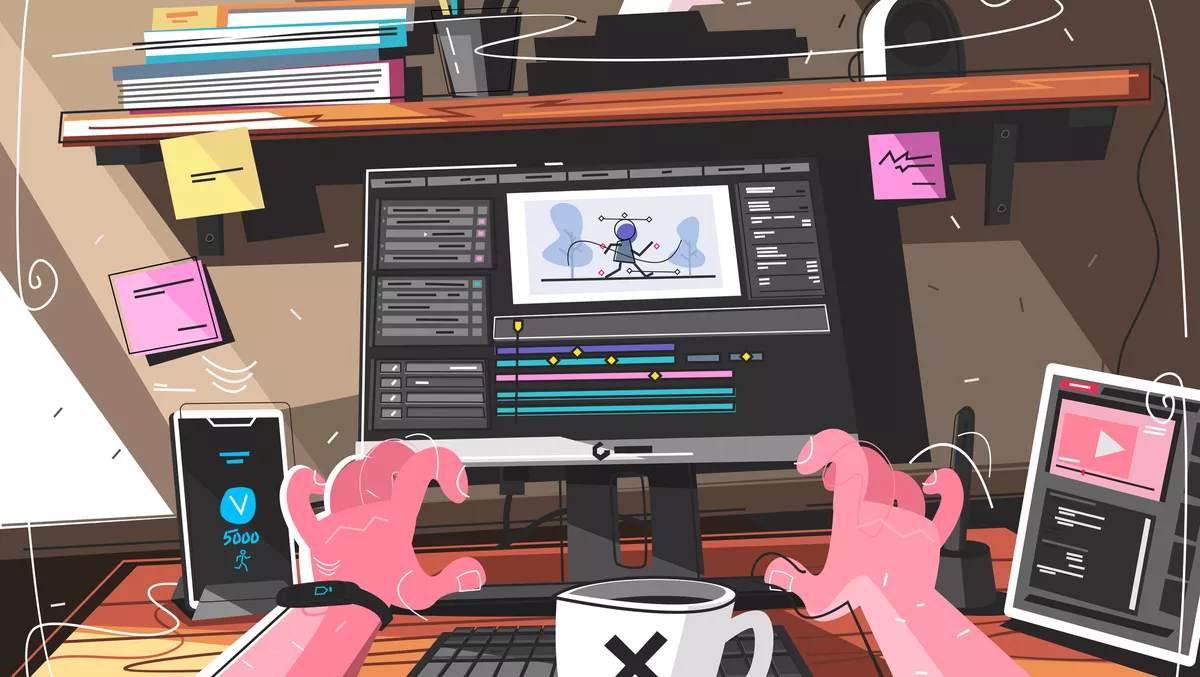
Gamefroot: Teach kids anything through game design
You probably knew that Wellington is a hotbed of game design, and that there are a lot of interesting edtech startups here as well. Gamefroot sits at the fascinating intersection of these two worlds, and they are really taking things to the next level.
Gamefroot makes it easy for anyone to become a game designer. They've built a platform which lets anyone make an HTML5 game using a great library of templates and objects, a super-easy Scratch-like scripting language, drag-and-drop construction, and instant publishing to the web, or iOS, Android, or Chrome stores. They have over 110k users from all over the world, and tens of thousands of games on the platform. You can try some of the games out on gamefroot.com, or have a shot at making your own game on make.gamefroot.com. There are some excellent tutorials to get you going. Here's a 5-minute video which takes you through the process.
The idea for Gamefroot started in 2005 when founder Dan Milward wanted to make games, but didn't have the programming experience to do so. If you cast your mind back to the dark days of prehistory before the iPhone, you might remember the only real mobile platform was Nokia feature phones with 320x320px resolutions. At the time, there were only about 30 games available for Nokias. They published the first version of Gamefroot on Facebook, and almost instantly there were hundreds of games available. But Nokia in their wisdom pulled the underlying Flash technology from their phones, and that was that. Then in 2007, the first iPhone came out, and Gamefroot had another go at publishing games on iPhones. But Steve Jobs pulled Flash technology from the iOS platform, and that was that.
The team weren't deterred though. In 2013, the HTML5 standard was becoming stable enough to build games on, and Milward and co had another go at publishing using a Javascript game engine. This time it stuck. But what surprised the Gamefroot team was their audience: they had been expecting game designers to be their early adopters, but it was teachers and educators who came knocking at the door. At the beginning of 2015, the team started serious collaboration with the education sector, and Gamefroot is now a collaborative partnership between technology and education.
In addition to Dan Milward, the team includes David Thornycroft, Ben Richards and Stefan Le Minh. Gamefroot resources are designed in partnership with the education sector and normally involves working with teachers and other game designers from the sector. They have some high powered advisors as well, including game reserach fellow Dr Bronwyn Stuckey, Network for Learning's Pete Hall, NZ e-learning teacher Marianne Malmstrom and the ubiquitous angel investor Trevor Dickinson.
But why should game design be so compelling for educators? The New Zealand curriculum has largely moved past teaching kids facts, and focuses on teaching kids how to learn and integrate that knowledge into their daily lives. This seems to be particularly effective for STEM subjects. In order to design a game to express what you've learned in class, you need to know quite a lot about the subject, and you get the bonus of having a game that makes it fun for someone else to learn that subject as well. Oh, and you learn to code as a by-product. As examples, biology teachers have commissioned students to design games to build their own fungi, and English teachers are using Gamefroot to teach kids how to develop text-based games.
There's a real shortage of teachers capable of teaching these things to kids, which is where Gamefroot's paradigm of designing a game on a canvas, applying pre-fabricated game mechanics, easy scripting and customisation all within a hosted UI comes into play. The scaffolding process is important in helping people learn how to write games, and mimics the Khan Academy and Hour of Code.
The NZ Council for Educational Research (NZCER) wanted to know if this approach to learning is both cognitively engaging and educationally sound, so they commissioned a study on "Game-coding workshops in New Zealand public libraries" which was published earlier this month. Senior Researcher Rachel Bolstad concludes that Gamefroot inspired kids to want to make their own games or apps to sell, and boosted their interest in a possible future career in game design, coding, or programming. She also identifies the potential for this technology to help redress gender imbalance in this field, as well as supporting more Māori and Pasifika into the field.
Gamefroot is currently pre-revenue, but they're about to start charging schools for providing classroom-specific tools. It's a mass-market play, as schools don't have huge amounts of cash to invest in this area. The USA will be the main target.
They've already had a lot of exposure in the USA mainly thanks to teacher word-of-mouth, and have active collaborations going with teachers and education providers in that market.
They also have active collaborations with the game industry, where there's a critical shortage of game developers. Game design companies are eager to inspire as many kids as possible into the industry, and they see Gamefroot as one vehicle for doing this. And as a kid, what could be more fun than building games using assets from your favourite game designers?
Gamefroot has raised $150k to date from private investors, has had some support from Callaghan Innovation for R-D, and attracted service revenue from companies that want specific games developed. They're planning on raising a seed round in the near future, specifically targeting investors with experience in the edtech sector that will help them break into the US Market. Their end game is strategic acquisition by a major edtech company or a platform player.
Here's a great opportunity for you, dear readers: if you design a compelling game on the Gamefroot platform about the NZ startup scene, I'll offer to feature it on this blog. Have fun!

